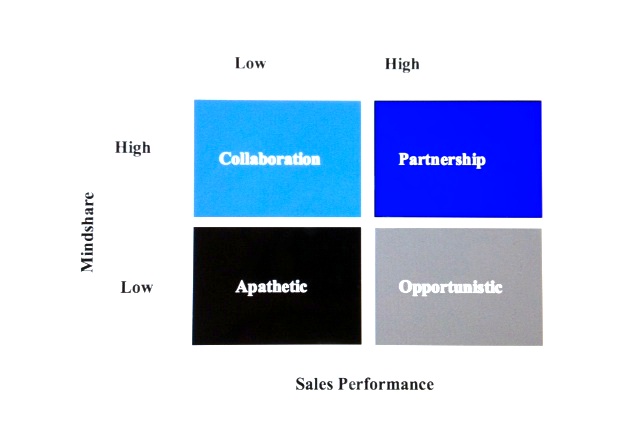Sales channels are mediums used by manufacturers for selling and distributing goods and services between the manufacturer and the end consumer.
It can be described as any path you take to get your solution to the consumer. Today, there are four types of sales channels:
- A direct sales channel sells products and services through an in-house sales team. Some organizations call this a high touch sales team. An example of a direct sales model includes: pharmaceuticals, major chemical manufacturers, and airplane manufacturers.
- An indirect sales channel is when a manufacturer sells through one or more independent sources. Traditionally these include wholesalers, retailers, agents, manufacturer representatives, distributors, system integrators and resellers. A multi-channel distribution model uses a combination of these providers to deliver the complete solution to the end consumer. Examples include: computer software and services, commercial office furniture and insurance companies.
- A mixed model sometimes called a “bi-furcated” sales model uses a combination of direct and indirect sales teams to market products and services. One of the keys to success in managing a sales channel comprised of intermediaries is to create “profitable convergence or a foundation where it is profitable for them. Examples of mixed-model sales include: medical products, retail products, and business services.
- Internet sales combine all of the above to sell products and services to both business and consumers through the Internet. Examples include: Amazon.com and EBay.
Webster’s dictionary defines convergence as a coming together from multiple sources, uniting or merging of groups or tendencies that were originally opposed or very different. This means that the goals and strategies of the manufacturer must align with the sales channel. When the convergence is profitable everyone wins. When teams are not aligned, everyone suffers.
Manufacturers create mindshare when they actively engage with the channel. Usually this requires a business strategy that leads to a differentiated relationship.
Behavioral Styles
There are four (4) different and distinct types of behavioral styles that channel partners have with manufacturers. They can be described as follows:
- Apathetic: These channel partners have low mindshare and marginal sales performance for your company. They are committed to only taking the “low hanging fruit.” They take orders, but they do not actively solicit new business for you. For these channel partners you are simply not that important to them and their future growth. There are only two strategies with this type of channel partner. 1) Increase their mind share and move them to “collaboration’ by addressing their issues or concerns and finding that profitable convergence or 2) terminate them.
- Opportunistic: These channel partners have low mindshare but high sales performance. They have partial commitment. Their revenue is derived from an installed base of repeat business; they are essentially “milking the line” and create little or no new business. These types of partners will not sell your new product unless they are motivated or forced to do so. These are lifestyle or legacy partners. With these types of channel partners there are two strategies. The first is to inspire them to collaboration. Move them to a healthy balanced business model of 50% new and 50% existing business. The second strategy is to maintain the status quo. With this strategy, however, it must be recognized that over time, the channel partner will migrate to “lackadaisical.” This occurs as the purchase frequency and/or volume of customer purchases declines.
- Collaboration: These channel partners have high mindshare but low sales performance. These are usually new channel partners. They are committed but haven’t yet achieved sales success with your product or service. These channel partners must be carefully managed and developed. In an ideal situation you have provided the foundation for success. Through your leadership, you guide them through the process and teach them how business is won. You measure their performance and routinely audit your expectations. If they don’t achieve success within a reasonable time period they will eventually loose mindshare. If they are not making money, they will become lackadaisical and termination will be required. This is a group that will help you achieve your growth targets for the year.
- Partnership: These channel partners have high mind share and high sales performance. They are joined at the hip with the manufacturer. These channel partners are committed to selling all of your products and services. You are a significant and growing part of their revenue stream. The strategy with these channel partners is to continue to build upon the relationship. Since the relationship is mutually beneficial each party looses if the relationship degenerates into one that is “opportunistic.” Never take these partnerships for granted; always be active in enhancing this relationship.
If we plot mindshare versus sales performance, the behavioral styles of channel partners looks as follows:

“Are your channel partners’ shades of Black or Blue?”
Can a channel partner fall into more than one category? Absolutely! Some channel partners will have a low mindshare for established products but will happily receive orders because they are established with the customer. In other cases your product will be a “focus” for them. It will have high mind share usually because it pays a higher commission for selling it.
This diagram can help you simplify where you may be with each channel partner and determine how you will manage them to a different quadrant.
Conclusion
Understanding the behavioral style of your channel partners is critical to your long- term success. What percent of your channel partners fall into each category? What percent of your revenue rests with these channel partners? What is your current year forecast/results with the partners in each category? Where are you vulnerable and where are you strong?
Image Credit: Google Images


